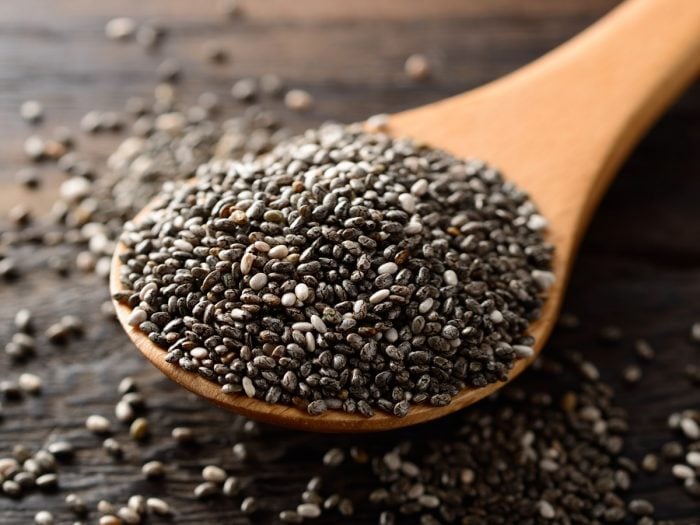Xanthan gum is a commonly used substitute for flour or starch in recipes that are altered to suit gluten-free requirements. It works as a thickener as well as a sweetener. While it may not be too difficult to pick from the shelves, xanthan gum substitutes may be required for a variety of reasons. While they aren’t difficult to find, knowing how they differ in terms of nutrition and flavor is critical.
What is Xanthan Gum?
Xanthan gum is a type of extracellular polysaccharide that is produced by certain microorganisms, primarily plant-pathogenic bacteria. Once it is isolated, it can be used as a thickening agent and ingredient in many common products, such as ice cream, cosmetics, yogurt, lotions, and salad dressings. After being precipitated with alcohol, xanthan is dried and then ground into a powder. It is often used in protein powders and other supplements to provide texture and volume. [1] [2]
A xanthan gum substitute may be necessary for people who have an allergy or intolerance to the substance, or those who need to use it on a large scale and want to save money since this substance can be expensive.
Top Xanthan Gum Substitutes
The best xanthan gum substitutes include agar-agar, cornstarch, carrageenan, arrowroot, guar gum, egg whites, psyllium seed husks, gelatin, and cornstarch, among others.
Cornstarch
With a similar consistency to xanthan gum, cornstarch is a great filler for your recipes if you need more volume. Substitute one for the other in a 1:1 ratio. Cornstarch, like xanthan gum, is also a gluten-free option.
Agar-agar
Also known as agar, this alternative to gelatin can help to add bulk to foods and it stabilizes ingredients as they cook. Derived from seaweed, this ingredient is rich in fiber. The substance first needs to be dissolved in water before adding it to the recipe. This also can be replaced in a 1:1 ratio. [3]

When using as a substitute, add water to chia seeds and let them soak. Photo Credit: Shutterstock
Arrowroot Starch
With a similar consistency to cornstarch, arrowroot powder acts as a thickening agent and can be used to replace xanthan gum. It may be available in the market as arrowroot powder, starch, or flour.
Egg Whites
Working as a leavening agent and a binding agent, egg whites are popular in baked goods and desserts to give a fluffy texture. For every tablespoon of xanthan gum that the recipe calls for, use one egg white. [4]
Chia Seeds
Not only are these seeds high in fiber, but they also provide omega-3 and omega-6 fatty acids, which xanthan gum does not provide. While you can use the same quantities of chia seeds as xanthan gum, you cannot use them dry. Ensure that you soak these seeds in enough water till they form the transparent outer layer, for them to have the same effect as the gum.
Psyllium Husks
When these husks are ground down, they make a soluble fiber-rich powder that can be an excellent thickener and binding agent when exposed to water, similar to xanthan gum. Hence, the powder needs to be soaked beforehand, as with chia seeds. [5]
Gelatin
When collagen breaks down, it creates gelatin, a sticky substance that is an ideal alternative to xanthan gum in baked goods. You will require twice the amount of gelatin than xanthan gum that you are supposed to add to the recipe.
Guar Gum
A white powdery substance often used in cream sauces and soups as a thickening agent, this is an ideal substitute for xanthan gum. The ideal substitute ratio for xanthan gum with guar gum would be 2:3, which means that for every two units of xanthan gum that you should be adding, add three units of guar gum instead. [6]
Carrageenan
Obtained from the red algae, Irish moss, carrageenan is a plant-based product that can be used in place of gelatin or xanthan gum in cakes, pastries, dairy products, and more.
Ground Flaxseeds
Known as a great binding agent, ground flaxseeds are also some of the best sources of omega-3 fatty acids in your diet. They may also add a slightly different flavor to the recipe, so it is ideal to do a test batch first.
